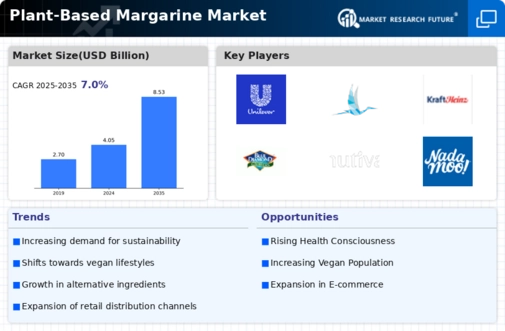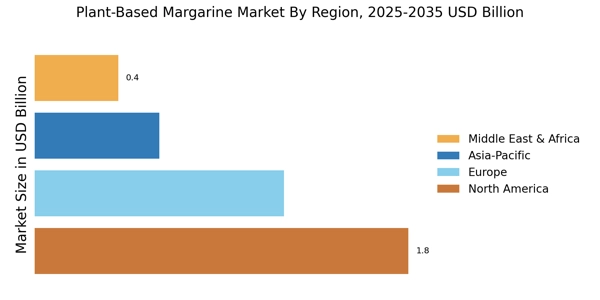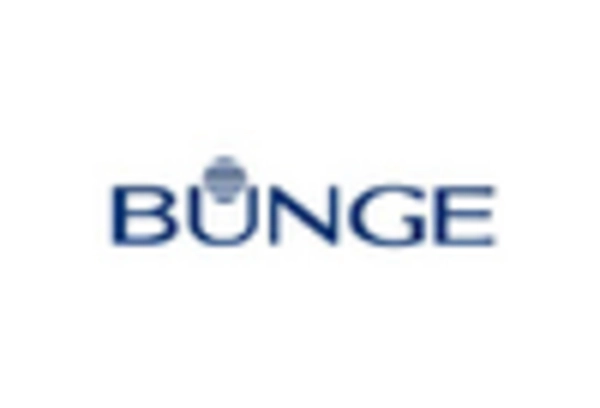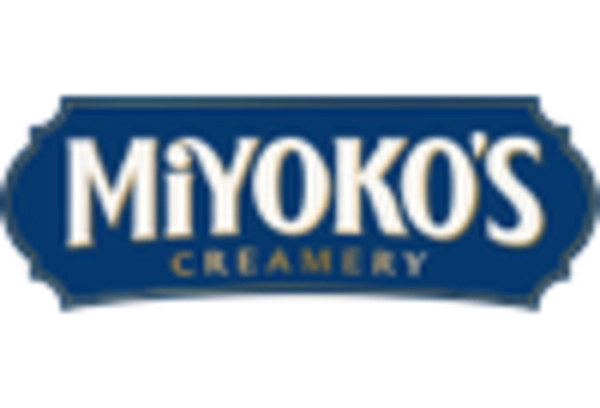Environmental Sustainability
Concerns regarding environmental sustainability are driving the Plant-Based Margarine Market as consumers become more environmentally conscious. The production of plant-based margarine typically has a lower carbon footprint compared to traditional dairy butter, which may appeal to eco-conscious consumers. Data suggests that the dairy industry is a significant contributor to greenhouse gas emissions, prompting a shift towards plant-based alternatives. As awareness of climate change and its impacts grows, consumers are likely to seek products that align with their values of sustainability. This trend is expected to bolster the demand for plant-based margarine, as it offers a more sustainable option for consumers looking to reduce their environmental impact.
Diverse Culinary Applications
The versatility of plant-based margarine in various culinary applications is another driver for the Plant-Based Margarine Market. It can be used in baking, cooking, and as a spread, making it an attractive option for both consumers and food service providers. The ability to substitute traditional butter in recipes without compromising taste or texture is likely to enhance its appeal. As culinary trends evolve, the demand for plant-based ingredients is expected to rise, with plant-based margarine playing a crucial role. The market data indicates that the food service sector is increasingly incorporating plant-based options into their menus, further driving the growth of the Plant-Based Margarine Market.
Innovative Marketing Strategies
Innovative marketing strategies are emerging as a key driver for the Plant-Based Margarine Market. Companies are increasingly focusing on branding and product differentiation to attract health-conscious consumers. By highlighting the unique benefits of plant-based margarine, such as its health advantages and sustainability, brands can effectively engage their target audience. The use of social media and influencer partnerships is also becoming prevalent, allowing companies to reach a broader demographic. As competition intensifies, effective marketing strategies will likely play a crucial role in shaping consumer perceptions and driving sales within the Plant-Based Margarine Market.
Rise of Veganism and Plant-Based Diets
The rise of veganism and the adoption of plant-based diets are significantly influencing the Plant-Based Margarine Market. As more individuals choose to eliminate animal products from their diets, the demand for plant-based alternatives continues to grow. This trend is supported by a growing body of research highlighting the health and environmental benefits of plant-based eating. In 2025, the market is likely to see an increase in consumers seeking plant-based margarine as a substitute for traditional butter. The Plant-Based Margarine Market is thus positioned to capitalize on this trend, catering to the needs of a diverse consumer base that prioritizes plant-based options.
Health Benefits of Plant-Based Margarine
The increasing awareness of health benefits associated with plant-based diets appears to be a primary driver for the Plant-Based Margarine Market. Consumers are increasingly seeking alternatives to traditional dairy products due to concerns over cholesterol and saturated fats. Research indicates that plant-based margarine can offer lower cholesterol levels, which may contribute to heart health. In 2025, the market for plant-based margarine is projected to grow as more individuals adopt healthier lifestyles. This trend is likely to be fueled by the rising prevalence of health-related issues, such as obesity and cardiovascular diseases, prompting consumers to opt for plant-based options. The Plant-Based Margarine Market is thus positioned to benefit from this shift towards healthier dietary choices.


















Leave a Comment